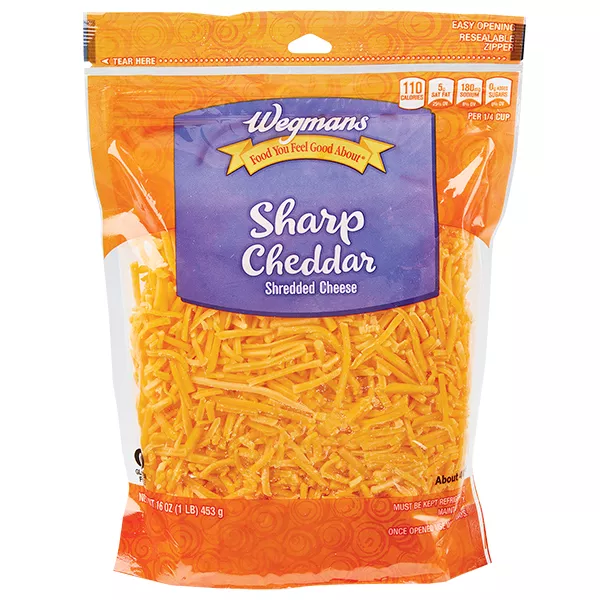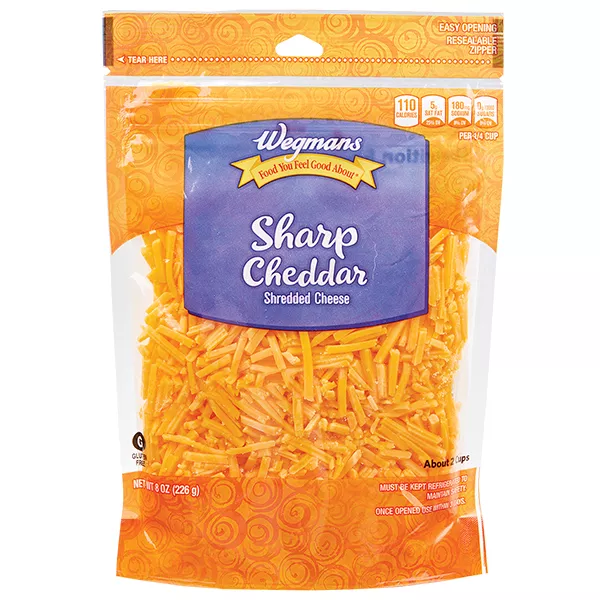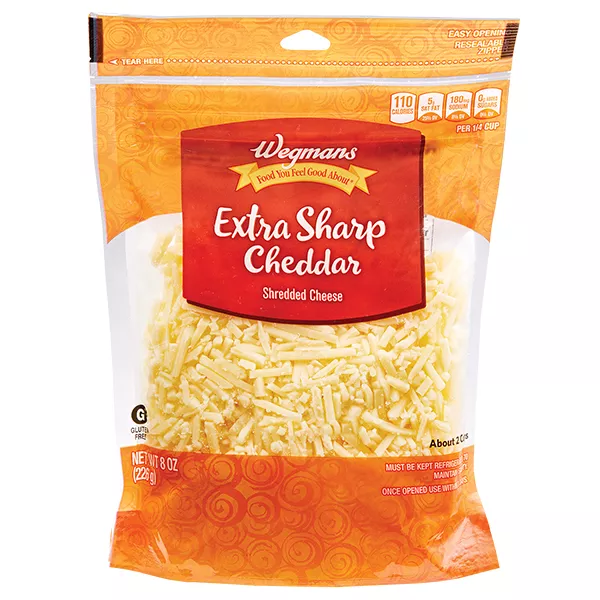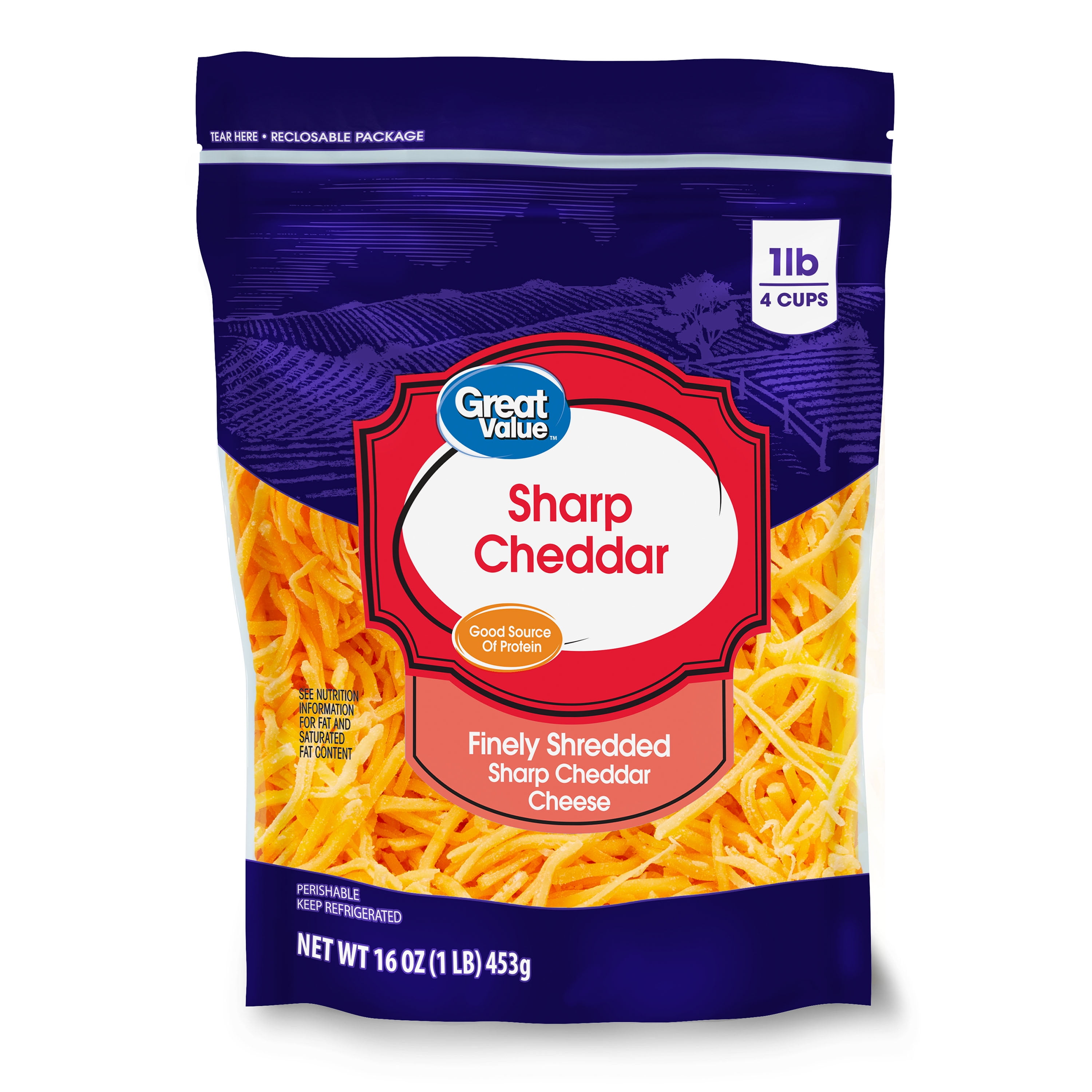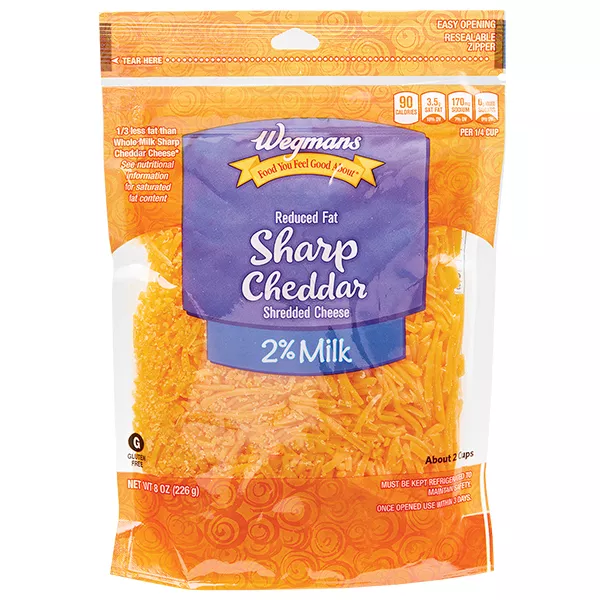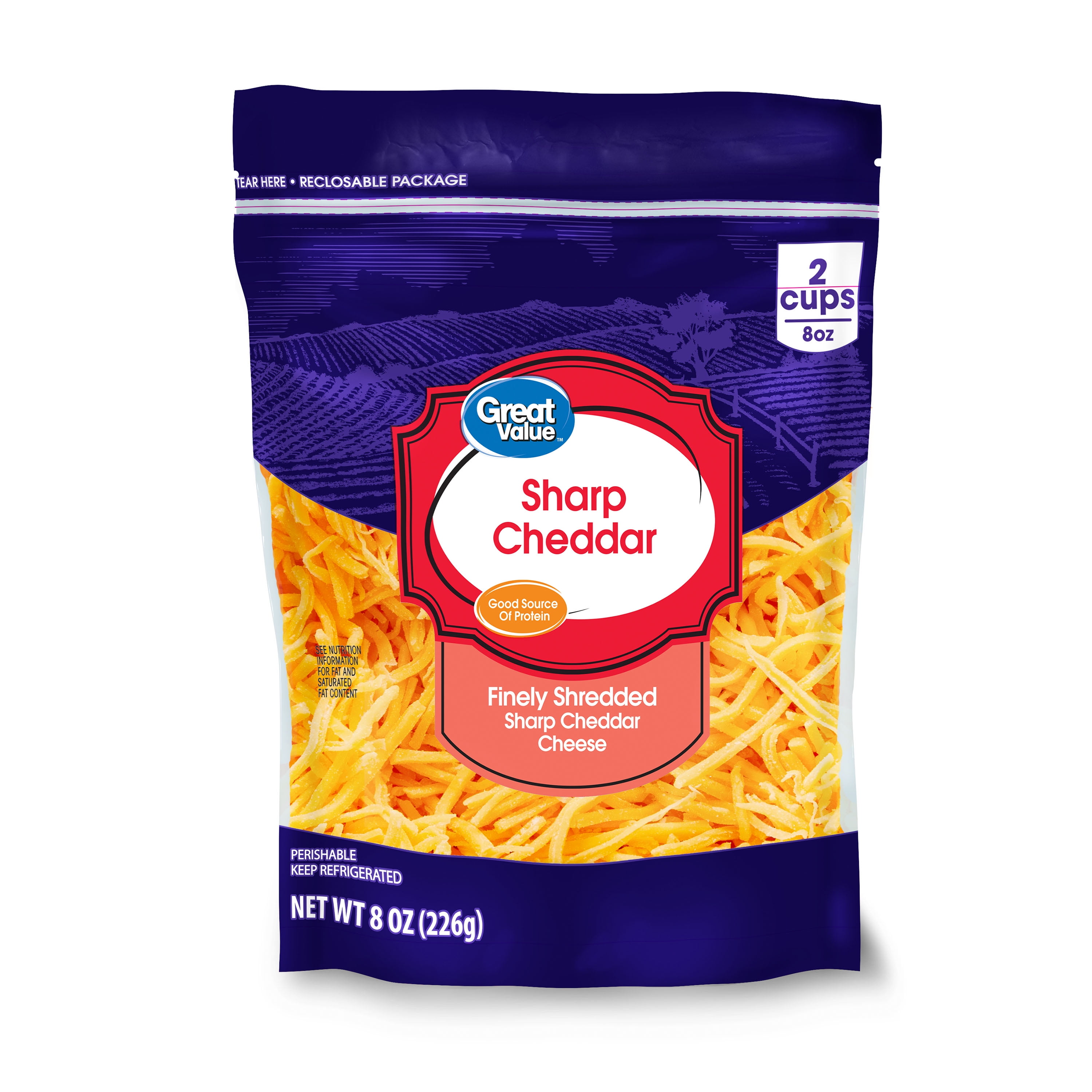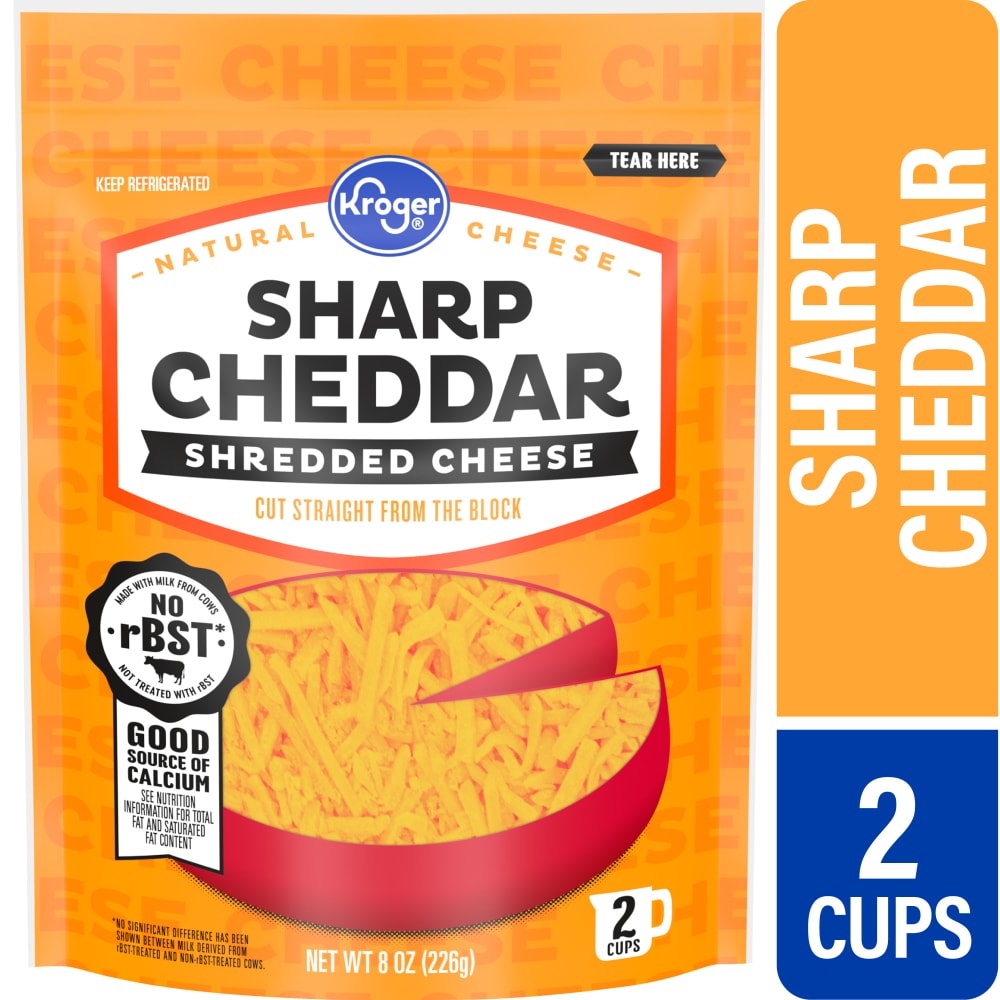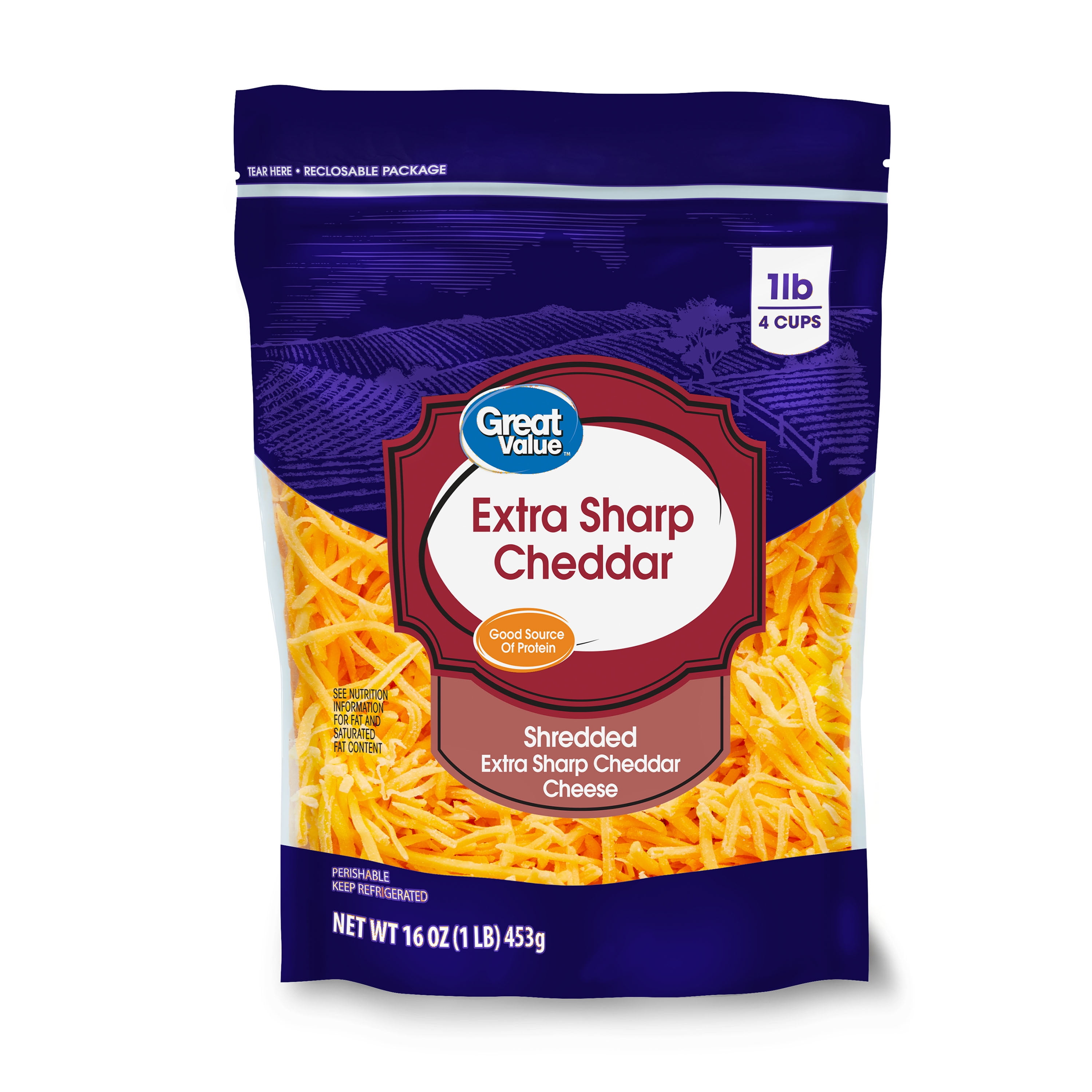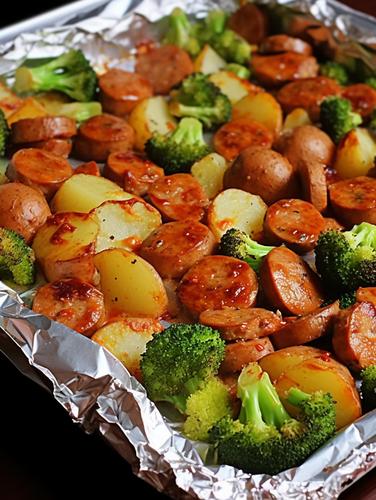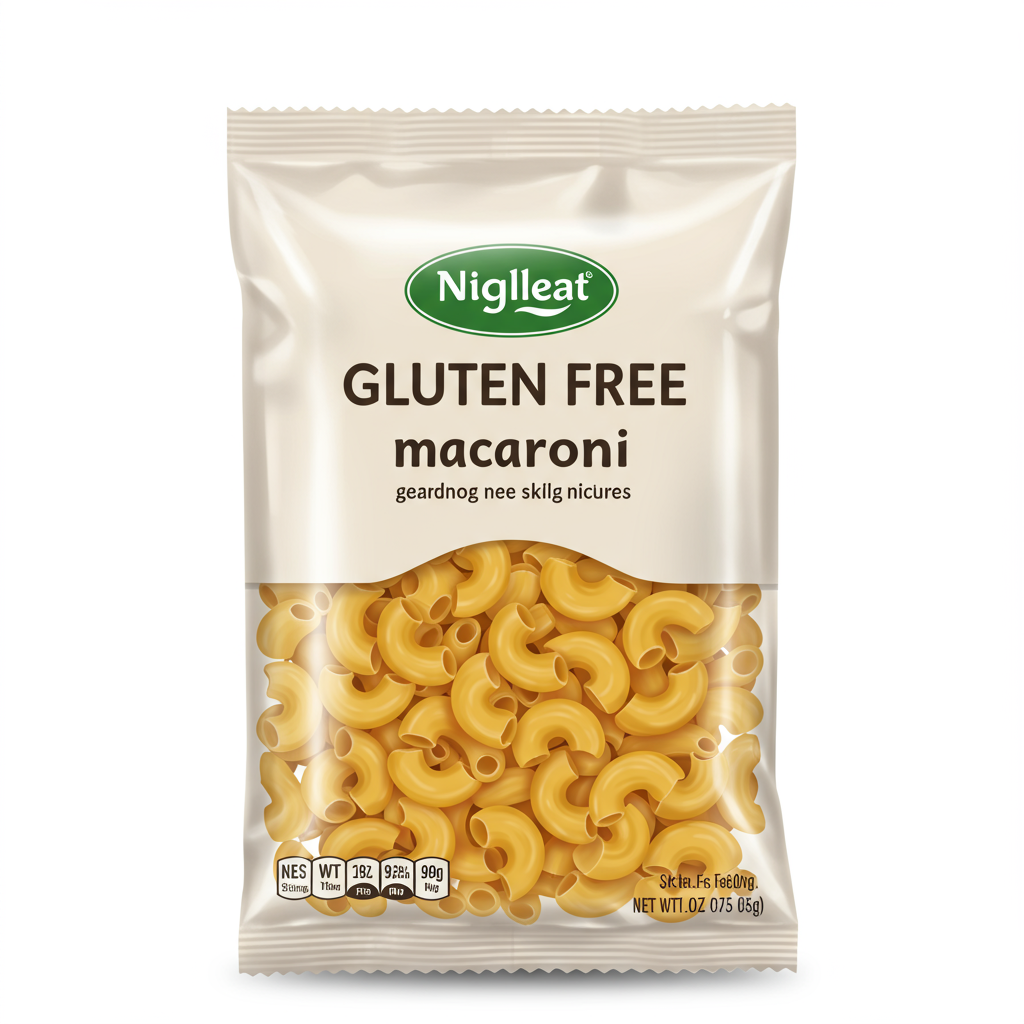Shredded Sharp Cheddar Cheese
Shredded sharp cheddar cheese is a popular and versatile ingredient found in many home recipes. Made from cheddar aged for a longer period of time, this cheese offers a more pronounced, tangy flavor compared to its milder counterparts. Its texture is firm yet crumbly, making it easy to shred and incorporate into dishes.
Commonly used in various dishes such as casseroles, quiches, and dips, shredded sharp cheddar cheese also serves as a garnish atop tacos, nachos, and baked potatoes. Additionally, it melts smoothly and blends well with other ingredients, contributing a rich, full-bodied flavor that enhances many recipes.
6%
CARBS
56%
FAT
38%
PROTEIN
634 Shredded Sharp Cheddar Cheese Products
Wegmans Sharp Cheddar Shredded Cheese
Wegmans Sharp Cheddar Shredded Cheese
Wegmans Extra Sharp Shredded Cheddar Cheese
Great Value Cheese Sharp Finely Shredded Cheddar
Wegmans Reduced Fat 2% Milk Sharp Cheddar Shredded Cheese
Great Value Cheese, Finely Shredded, Sharp, Cheddar
Great Value Sharp Cheddar Finely Shredded Cheese
Cabot Creamery Cheese, Cheddar, Vermont Sharp, Shredded, Classic Cut
Kroger® Sharp Cheddar Shredded Cheese
Great Value Extra Sharp Cheddar Shredded Cheese
Used In 254 Recipes
6
Cheesy Beef Chili Mac with a Twist
2
Cheesy Beef Melt Sandwich
6
Philly-style Cheesy Steak Sandwiches
5
Smoky Cheddar Chicken Taquitos
3
Effortless One Pan Smoky BBQ Sausage and Roasted Veggies
2
Cheesy Bacon Ranch Chicken Foil Bundles
3
Hearty Keto Beef and Green Bean Bake
3
Rustic Ranch Casserole
Shredded Sharp Cheddar Cheese Is Frequently Used With
Shredded Sharp Cheddar Cheese FAQ
Cooking with shredded sharp cheddar cheese can be a game changer thanks to its robust flavor. When looking at the most common questions around cooking with it, they often revolve around getting the melting process right, choosing dishes that suit its sharp flavor, deciding between pre-shredded and block cheddar, and maintaining its texture while cooking.
People often go wrong when they overcook the cheese, leading to an oily, unappealing mess. To avoid this, add the cheese towards the end of cooking time when heat is either moderate or low.
Additionally, while opting for pre-shredded cheese is undeniably convenient, grating your own block of cheese may yield better results as it melts more uniformly and tastes fresher.
Getting the most out of shredded sharp cheddar involves understanding its flavor profile and how that can complement your dish. It's excellent in creamy dishes like gratin, macaroni and cheese, or potato soup, as the tartness from the cheddar breaks the monotony of creamy textures.
One little-known tip is that you can use cornstarch or flour to prevent the cheese from clumping together when melted. Additionally, you can layer it with other cheese varieties to create depth in your dish’s flavor profile. This cheese pairs well with mozzarella, Monterey jack, and Swiss cheese.
Why isn't my shredded sharp cheddar cheese melting evenly?
What types of dishes are best for using shredded sharp cheddar cheese?
When do I add the shredded sharp cheddar cheese when cooking?
Why does my shredded sharp cheddar turn oily when I cook it?
Is shredded sharp cheddar cheese the same as shredded cheddar cheese?
How can I keep my shredded sharp cheddar from clumping together?
Do I need to adjust salt in my recipe if I am using shredded sharp cheddar cheese?
Can I mix shredded sharp cheddar with other cheeses?
Can I use sharp cheddar cheese in a cheese board?
Is there a vegan alternative to shredded sharp cheddar cheese?
Expiration & Storage Tips
When does shredded sharp cheddar cheese expire?
Shredded sharp cheddar cheese typically lasts for about 1-2 weeks after opening if stored in a refrigerated environment. Unopened packets of shredded sharp cheddar cheese may last between 2-3 months when stored in the refrigerator. However, remember that the ‘sell by’ or ‘best by’ dates on the packaging are useful guides. If it's stored in the freezer, it can last for up to 2 months but the texture may alter slightly upon defrosting.
How do you tell if shredded sharp cheddar cheese is bad?
When the shredded sharp cheddar cheese has gone bad, it will often have a sour smell and mold may start forming. The cheese may also change color and become harder or drier over time. If you note any of these changes, it's best to discard the cheese.
Tips for storing shredded sharp cheddar cheese to extend shelf life
• Always store shredded cheese in a cold environment like a refrigerator.
• Keep the cheese in an airtight bag or container once opened to prevent it from drying out.
• If you want to freeze shredded cheese, spread it out on a baking sheet, freeze it, and then store in a freezer bag. This way the cheese will not clump together.
• It is always better to buy blocks of cheese and shred them yourself as pre-shredded cheeses contain preservatives and do not last as long as cheese blocks.
• Always wash your hands or use a clean utensil while handling the cheese to prevent contamination.
EXPIRES WITHIN
3 - 5
MONTHS
Equivalents
Substitutes

White Cheddar Cheese

Sharp White Cheddar Cheese

Extra Sharp Cheddar Cheese

Shredded Cheddar Cheese

Aged Sharp White Cheddar Cheese

Aged White Cheddar Cheese

Irish Cheddar Cheese

Shredded White Cheddar Cheese

Raw Milk Cheddar Cheese

Cheddar Cheese
See All
Health Info
Macros
4g
CARBS
36g
FAT
24g
PROTEIN
Allowed on these diets
LOW FAT
HIGH CALCIUM
VEGETARIAN
KETO
MEDITERRANEAN
LOW CARB
GLUTEN FREE
Contains these allergens
MILK

